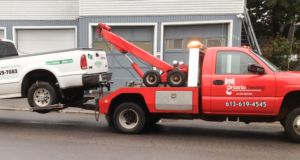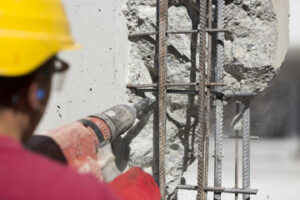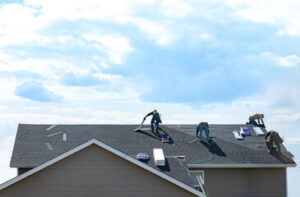The towing industry can be challenging and rewarding. To succeed, you need the right team and a solid plan.
Ernest Holmes invented the tow truck 1916 after helping a friend retrieve his car from a ditch. Holmes modified his 1913 Cadillac with an iron chain, pulley, and poles to pull the vehicle. Contact Western Towing now!

Roadside Assistance is an emergency service that can aid you in several situations. It can help you with a flat tire, jumpstart your car battery, and even deliver gas. You can buy a roadside assistance plan either rolled into your insurance policy or on its own, depending on your preference and budget. You should always carefully compare a roadside assistance plan’s cost and coverage options before choosing one. Some providers put a limit on how many calls or miles they’ll cover, while others offer a per-use model that allows you to pay only for what you need.
Some roadside assistance plans also include free towing, and some are available for vehicles other than cars, such as motorcycles. In these cases, the service provider will tow your vehicle to a repair shop for mechanical diagnosis. Some plans will also help you with lockout services, such as opening your trunk if it gets locked. Most of these services aren’t likely to cover the cost of a new part, but some will.
You’ll want to choose a roadside assistance company that is reputable and has a good track record. Some of them have online reviews and customer satisfaction ratings that you can read, which may help you make a decision. You can also check whether a provider is licensed and insured before signing up. You should be able to find this information on their website or contact them directly.
Roadside assistance is a valuable service to have, especially if you’re on long road trips or have a long commute. It can save you a lot of time and frustration. It’s especially useful if you have a younger or older vehicle, or if you’re unfamiliar with changing a flat tire or jumpstarting a battery. It can also save you the hassle of getting towed for illegal parking, as roadside assistance services won’t tow your vehicle in those instances. However, it’s important to note that they will usually tow your vehicle if it isn’t properly parked, such as in a no-parking zone.
Emergency Towing
A car accident, engine failure, or flat tire are all situations that require immediate roadside assistance. These incidents can leave you vulnerable to traffic hazards and inclement weather, so it’s important to get help quickly. Towing services provide a quick response to these situations, helping you get back on the road or to a safe location. They also minimize the potential for further damage, reducing your expenses.
When choosing a towing service, look for one that offers 24/7 availability and wide coverage. Emergencies don’t adhere to business hours, so having a service that operates around the clock ensures you have help when you need it most. Also, look for a company with a good reputation and the equipment needed to handle your vehicle type and situation.
Some towing companies also offer roadside assistance, such as changing a flat tire or jumpstarting a dead battery. These services can be especially helpful if you’re unfamiliar with the area you’re driving in, as they can make the process less stressful and give you peace of mind.
Emergency towing involves the use of specialized towing trucks and equipment to recover stranded vehicles. These trucks can be equipped with J-hooks, winches, chains, straps, safety lights, dollies, and skates. They can also provide assistance with off-road incidents, such as getting a vehicle out of mud or snow. Emergency towing companies are also trained to handle various types of vehicles, so they know how to safely tow them without damaging them.
The most common use of emergency towing is assisting disabled vessels in the event of a loss of power or other mechanical failure. Towing companies can also assist with removing vessels from dangerous locations, such as in the case of a disabled tanker. Emergency towing arrangements should be fitted at both ends on all tankers of more than 20,000 tonnes deadweight to reduce the risk of pollution. The arrangements should be ready for operation under harbour conditions within 15 minutes. They also must be capable of securing to towing wires in high waves. If the arrangements are not prepared properly there is a risk of parting towing gear, and damaging bollards and fairleads on a disabled ship.
Commercial Towing
Many businesses have vehicles that require special care during towing. Some of these vehicles include semi-trucks, custom-built vehicles, refrigerated trucks and construction equipment. Commercial towing services are equipped with the right tools and training to transport these vehicles safely over long distances. They can even provide regular fleet maintenance and inspections for their clients.
When choosing a commercial towing company, it’s important to find out what their insurance coverage is. A reputable business should offer general liability, workers’ compensation and auto insurance to ensure that they’re covered in the event of an accident. They should also offer a variety of alternative transport options so that drivers can stay on schedule and deliver their cargo on time.
The cost of commercial towing is based on several factors, including the size of the vehicle and the distance it will be towed. Businesses should look at different companies’ prices and choose one that fits their budget. In addition, they should consider whether they’ll need a flatbed or wheel-lift truck. The price of a wheel-lift truck may be higher, but it’s better for delicate vehicles.
A dependable towing service should have experience in hauling heavy machinery, vehicles and freight. They should also be able to handle emergency situations and respond quickly to calls for assistance. They should also be able to work with other transport companies, local mechanics and cargo handlers to make sure that the driver can stay on track with their delivery timeline.
Depending on the type of vehicles your company tows, you’ll need to determine if you want to do consensual or non-consensual towing. Consensual towing involves getting the consent of the vehicle owner before towing them away. This includes situations like classic car owners who need their cars towed to a show or racetrack. Non-consensual towing involves illegally towing a vehicle without the permission of the owner. This could include abandoned vehicles, vehicles with multiple tickets or vehicles that have been towed from private property to an impound lot.
Motorcycle Towing
Motorcycles are a symbol of freedom and fun, but it’s not always possible to ride your bike from one location to another. If your motorcycle is broken down, it’s important to find a professional company that offers flatbed towing services. This type of towing is much safer than other methods, such as using a trailer or cradle. It’s also important to choose a company that offers 24-hour service, as breakdowns don’t always happen during business hours.
Many people attempt to tow their own motorcycles, but this can cause further damage to the bike. Loading a motorcycle into the back of a pickup truck or onto a trailer is difficult and requires special equipment. Even using bungee cords or ropes can cause damage if they are not secured properly. A professional towing company has the experience and equipment needed to load a motorcycle safely.
When a motorcycle is being towed, the bike must be locked in place. While there are several ways to do this, a specialized motorcycle lock is the best option. It is designed to prevent the motorcycle from being stolen and allows you to secure it to a tow truck without damaging its undercarriage. You should also use a tire pressure monitoring system (TPMS) on your motorcycle. This will alert you if there is an issue with the tires, which can cause the bike to lose air pressure during transport.
The most common method of towing a motorcycle is by flatbed. This is done with a flatbed truck that has a platform or ramps to roll the bike onto. The flatbed trucks typically have a hydraulic lift to allow the bike to be fully secured during transportation. This is the safest way to transport a motorcycle, as it eliminates the risk of the bike falling off during transport.
If you have a comprehensive motorcycle insurance policy, you may be able to claim reimbursement for your roadside assistance or towing fees. However, you should check the terms of your policy before you need to use it. Some policies have a maximum towing limit, and if you go over this amount, you will need to pay out of pocket for the extra mileage.




